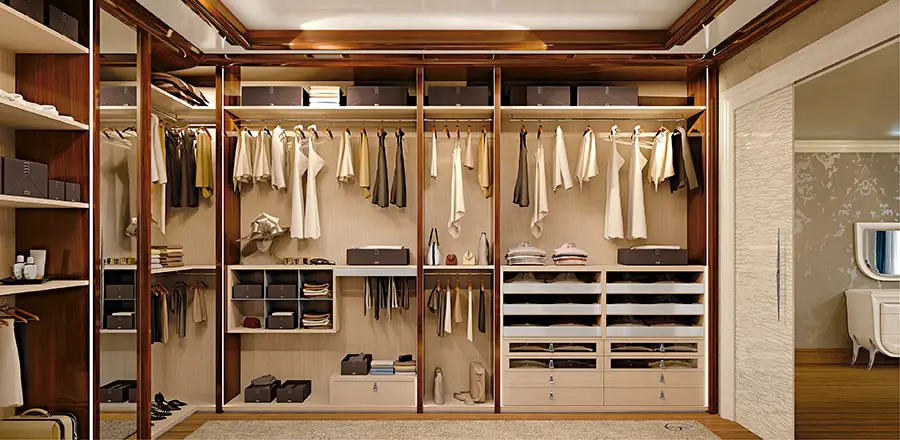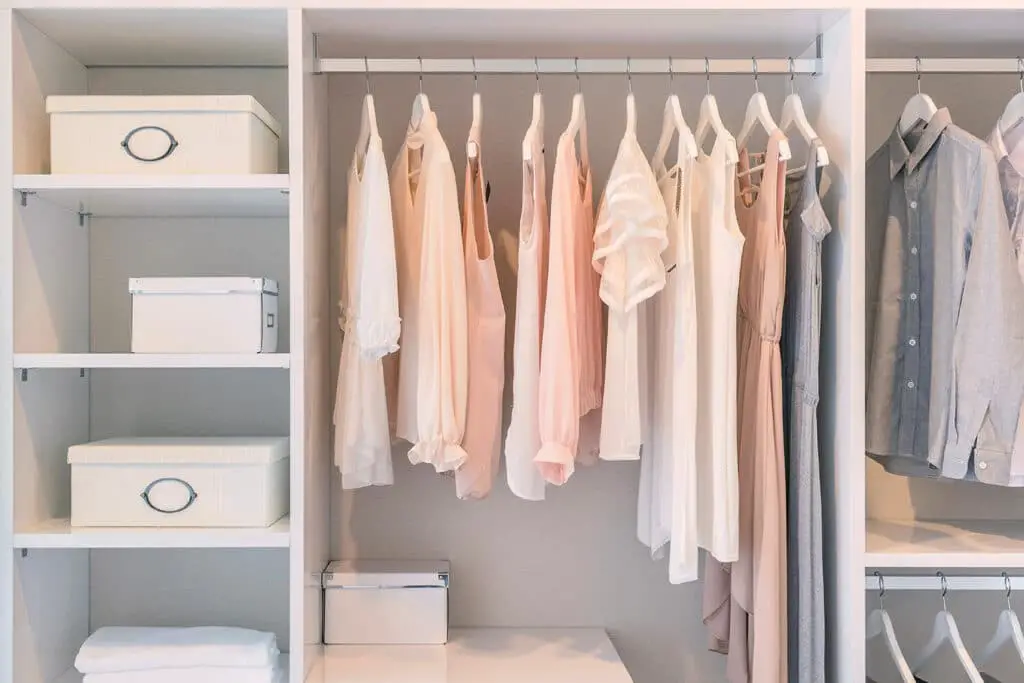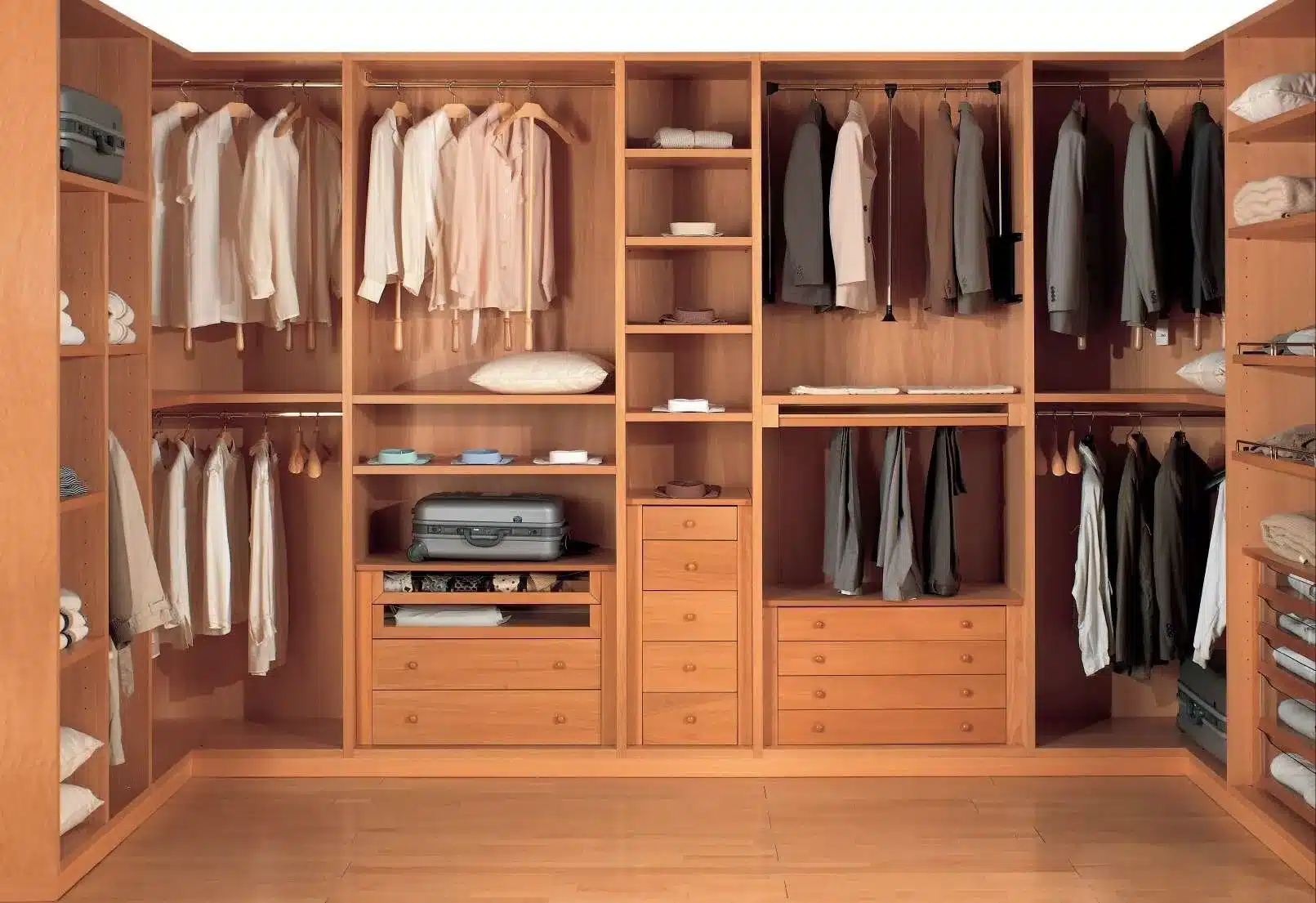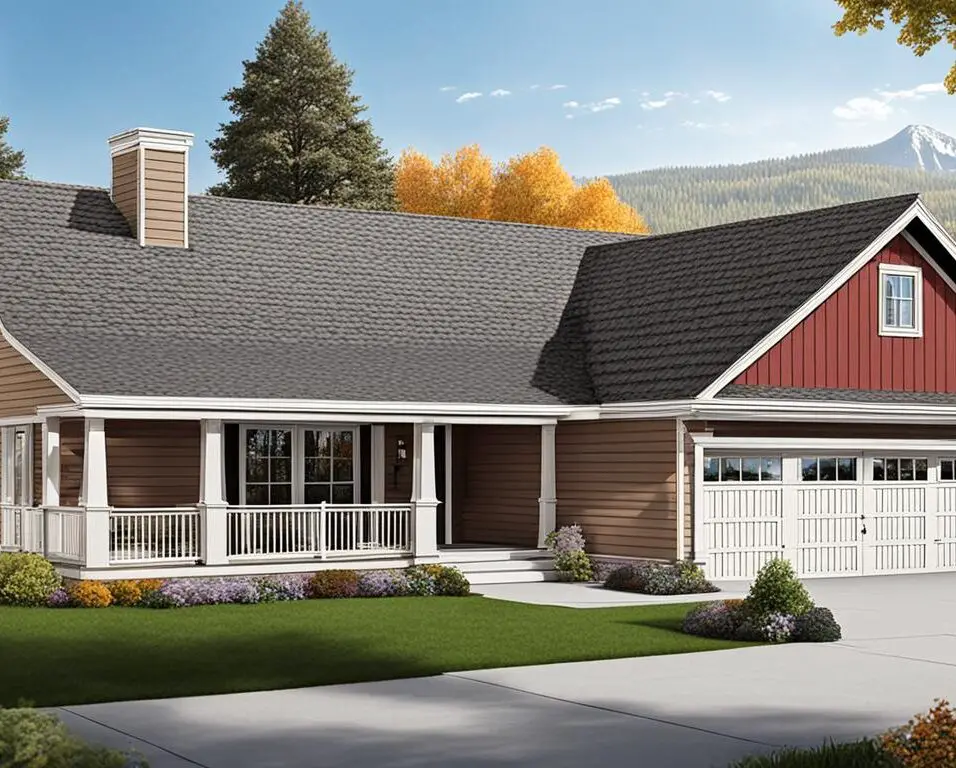How To Downsize Wardrobe
Introduction
How To Downsize Wardrobe: Having a cluttered and overflowing wardrobe can be overwhelming and stressful. It can make it difficult to find the clothes you need and can even affect your mood and productivity. If you find yourself constantly rummaging through piles of clothes or feeling like you have nothing to wear, it may be time to downsize your wardrobe.
Downsizing your wardrobe can be a daunting task, but with the right approach and mindset, it can also be a rewarding and liberating experience. In this article, we will explore some practical tips and strategies to help you downsize your wardrobe and create a more minimalist and functional closet.
Assessing Your Current Wardrobe: Before you start downsizing your minimalist wardrobe, it’s important to take stock of what you currently have. This involves going through each item of clothing and assessing its value and relevance in your life. Ask yourself questions like:

How can I shrink my wardrobe?
Simple Ideas to Thin Out Your Closet
- If you are looking for help on how to get rid of clothes and form a more minimalist closet, here are nine simple tips to get you started:
- Start easy.
- Remove seasonal items.
- Get rid of clothes that don’t fit once and for all.
- Reduce your need for additional accessories.
Shrinking your wardrobe can be a daunting task, especially if you have accumulated a large collection of clothes over the years. However, with a little planning and organization, it is possible to downsize your wardrobe and create a more streamlined and efficient closet. In this article, we will explore some strategies and tips to help you shrink your wardrobe and make the most of your clothing collection.
Streamlining Your Wardrobe: Practical Steps for a Minimalist Approach
Firstly, it is important to assess your current wardrobe and determine what items you truly need and love. Take some time to go through each piece of clothing and ask yourself if you have worn it in the past year or if it brings you joy. If the answer is no, it may be time to let go of that item. Consider donating or selling clothes that are in good condition but no longer serve a purpose in your wardrobe.
Secondly, consider creating a capsule wardrobe. A capsule wardrobe is a collection of essential clothing items that can be mixed and matched to create a variety of outfits. By focusing on quality over quantity and choosing versatile pieces, you can significantly reduce the number of clothes you own while still having a wide range of outfit options.
Thirdly, organize your wardrobe in a way that makes it easy to see and access your clothes. Consider using storage solutions such as hanging organizers, drawer dividers, and shoe racks to maximize the space in your closet. By keeping your clothes visible and easily accessible, you are more likely to wear and enjoy them.
Lastly, be mindful of your shopping habits going forward. Before making a new clothing purchase, ask yourself if it is something you truly need and if it will add value to your wardrobe. By being more intentional with your shopping, you can prevent your wardrobe from becoming cluttered again in the future.
How do you declutter a wardrobe fast?
A simple place to start is with your least-worn clothes, as that’s where the majority of decluttering will happen. ‘Start with pulling out anything that hasn’t been worn for the last 6-12 months. Ask yourself why and then decide if you want to keep it or donate it. Ask questions like does it fit?
Decluttering a wardrobe can be a daunting task, especially if it has been neglected for a long time. However, with the right approach and some efficient strategies, it is possible to declutter a wardrobe quickly and effectively. Whether you are looking to create more space, organize your clothes, or simply get rid of items you no longer need, these tips will help you declutter your wardrobe in no time.
Strategic Wardrobe Decluttering: Four Essential Steps
1. Set a clear goal: Before you start decluttering, it is important to set a clear goal for yourself. Determine what you want to achieve with your wardrobe decluttering project. Do you want to create more space? Do you want to organize your clothes by season or type? Having a clear goal in mind will help you stay focused and motivated throughout the process.
2. Sort items into categories: To declutter your wardrobe efficiently, it is helpful to sort your items into categories. This could include categories such as tops, bottoms, dresses, outerwear, and accessories. By sorting your items into categories, you can easily see what you have and identify any duplicates or items you no longer wear.
3. Use the “”keep, donate, sell, discard”” method: As you go through each category, use the “”keep, donate, sell, discard”” method to determine what to do with each item. Keep the items you love and wear regularly, donate items that are in good condition but no longer serve you, sell items that are still in good condition but no longer needed, and discard items that are damaged or no longer wearable.
4. Maximize your storage space: To make the most of your wardrobe space, consider using storage solutions such as hanging organizers, shoe racks, and drawer dividers. These can help you maximize your storage space and keep your wardrobe organized.
What are the benefits of downsizing your wardrobe?
Easier To Dress Up
It is simpler to identify the pieces you currently own when your closet is less cluttered and contains fewer stuff. It’s simple to see how many shirts, pants, and jeans you have, making it quicker and easier to decide on a dressing up look.
Downsizing your wardrobe can have numerous benefits for both your physical and mental well-being. By reducing the number of clothes you own, you can simplify your daily routine, save time and money, and even contribute to a more sustainable lifestyle.
One of the main advantages of downsizing your wardrobe is the simplification of your daily routine. With fewer clothes to choose from, you can easily decide what to wear each day without feeling overwhelmed by too many options. This can help you save time in the morning and reduce decision fatigue, allowing you to start your day with a clear mind and a sense of calm.
Beyond the Closet: Additional Benefits of Downsizing Your Wardrobe
Another benefit of downsizing your wardrobe is the potential cost savings. By having fewer clothes, you can avoid unnecessary shopping sprees and impulse purchases. Instead, you can focus on investing in high-quality, versatile pieces that can be mixed and matched to create various outfits. This can help you save money in the long run and build a wardrobe that truly reflects your personal style.
Additionally, downsizing your wardrobe can contribute to a more sustainable lifestyle. The fashion industry is known for its negative environmental impact, from the production of textiles to the disposal of unwanted clothing. By reducing the number of clothes you own, you can minimize your contribution to this waste and promote a more conscious approach to fashion. You can also consider donating or selling your unwanted clothes, giving them a second life and reducing the demand for new clothing.
Lastly, downsizing your wardrobe can have positive effects on your mental well-being. Clutter and excess can create a sense of overwhelm and stress. By decluttering your wardrobe and keeping only the items that truly bring you joy and make you feel confident, you can create a more peaceful and organized living space. This can have a ripple effect on your overall well-being, promoting a sense of clarity and contentment.
How do I downsize my capsule wardrobe?
Rector has a five-step approach to building your own capsule wardrobe.
- Pare down your closet to 37 items.
- Wear only those 37 items for three months.
- Don’t shop for clothing during the majority of the season.
- During the last two weeks of the season, plan and shop for your next capsule.
Downsizing a capsule wardrobe can be a daunting task, especially if you have accumulated a large collection of clothes over the years. However, with some careful planning and organization, it is possible to create a smaller, more streamlined wardrobe that still reflects your personal style and meets your needs.
Intentional Wardrobe Downsizing: A Step-by-Step Guide
Firstly, it is important to assess your current wardrobe and determine what items you truly love and wear regularly. Take the time to try on each piece and ask yourself if it fits well, if it is in good condition, and if it makes you feel confident and comfortable. Be honest with yourself and let go of anything that no longer serves a purpose in your wardrobe.
Next, consider your lifestyle and the activities you engage in on a regular basis. This will help you determine what types of clothing you actually need. For example, if you work in a professional setting, you may need a few tailored blouses or dress pants. If you are a stay-at-home parent, you may prioritize comfortable and versatile pieces that can withstand the demands of daily life.
Once you have identified the essential items for your lifestyle, it is time to think about color coordination and versatility. Choose a color palette that complements your skin tone and allows for easy mixing and matching. This will ensure that you can create a variety of outfits with a smaller number of pieces. Look for items that can be dressed up or down, and consider the potential for layering to extend the wearability of each item.
Finally, as you downsize your wardrobe, consider donating or selling any items that are in good condition but no longer serve you. This will not only help you declutter your space, but it will also give someone else the opportunity to enjoy and make use of those items. Remember, downsizing your wardrobe is a process, so be patient with yourself and enjoy the journey of creating a more intentional and sustainable wardrobe.
How many clothes should a minimalist have?
While most minimalist wardrobes have between 15 and 50 clothing pieces, there’s no strict number of items to have in your closet. The key aspect is to have only clothes you need and love and discard the ones you don’t use nor need. A minimalist wardrobe is having only the clothes you need and love.
A minimalist lifestyle is all about living with less and focusing on what truly matters. When it comes to clothing, minimalists believe in owning a limited number of high-quality pieces that can be mixed and matched to create a variety of outfits. However, the exact number of clothes a minimalist should have can vary depending on individual preferences and needs.
Some minimalists advocate for a capsule wardrobe, which typically consists of around 30-40 items including tops, bottoms, dresses, outerwear, and shoes. The idea behind a capsule wardrobe is to have a small collection of versatile pieces that can be worn in different combinations throughout the year. By limiting the number of clothes, minimalists can simplify their daily routines, reduce decision fatigue, and save time and money.
Others may prefer to have even fewer clothes, aiming for a more extreme minimalist approach. These individuals may choose to have a smaller number of essential items that they truly love and wear regularly. By having a highly curated wardrobe, they can eliminate clutter and focus on quality over quantity.
Minimalist Wardrobe: A Personalized Approach to Intentional Living
It’s important to note that the number of clothes a minimalist should have is subjective and can vary based on personal circumstances. Factors such as climate, lifestyle, and personal style preferences can all influence the ideal number of clothes for an individual. For example, someone living in a four-season climate may require a larger wardrobe compared to someone living in a more temperate region.
Ultimately, the goal of minimalism is not to adhere to a strict set of rules or numbers, but rather to cultivate a mindset of intentional living and conscious consumption. It’s about being mindful of the items we bring into our lives and ensuring that they align with our values and enhance our overall well-being.
When it comes to downsizing a wardrobe, there are several effective strategies that can help you declutter and simplify your clothing collection. One strategy is to start by sorting your clothes into categories, such as tops, bottoms, dresses, and outerwear. This will allow you to see how many items you have in each category and identify any duplicates or items that you rarely wear.
Another strategy is to use the “”one in, one out”” rule. This means that for every new item you bring into your wardrobe, you should get rid of one item. This helps to prevent your wardrobe from becoming overcrowded and ensures that you are only keeping the items that you truly love and wear regularly.
Additionally, it can be helpful to set specific criteria for what you want to keep and what you want to get rid of. For example, you might decide to only keep items that fit you well, are in good condition, and align with your personal style. This can make the decision-making process easier and more objective.
How can I determine which clothing items to keep and which ones to get rid of?
When it comes to downsizing your wardrobe, it’s important to be strategic and intentional about the items you choose to keep and those you decide to get rid of. One effective strategy is to start by sorting your clothes into different categories, such as tops, bottoms, dresses, and outerwear. Within each category, evaluate each item individually and ask yourself a few key questions. Is it still in good condition? Does it fit well and flatter your body? Have you worn it in the past year? If the answer to any of these questions is no, it may be time to let go of that particular item.
Another helpful approach is to create a “”maybe”” pile for items that you’re unsure about. Put these items aside for a set period of time, such as a month or two. During this time, challenge yourself to wear them and see if they truly add value to your wardrobe. If you find that you haven’t reached for these items or they don’t make you feel confident and comfortable, it’s a clear sign that they can be donated or passed on to someone else who will appreciate them.
Are there any specific tips for organizing a downsized wardrobe?
Organizing a downsized wardrobe can be a challenging task, but with the right strategies, it can be a rewarding and efficient process. Here are some specific tips to help you organize your downsized wardrobe:
1. Categorize and sort: Start by categorizing your clothing items into different groups such as tops, bottoms, dresses, and accessories. This will help you get a clear picture of what you have and make it easier to organize. Once you have categorized your items, sort them further by color or season to make it even more organized.
2. Utilize storage solutions: Invest in storage solutions that maximize the space in your wardrobe. Use hangers, hooks, and shelves to make the most of the available space. Consider using storage bins or dividers to keep smaller items like socks or scarves organized. Utilizing these storage solutions will not only help you keep your downsized wardrobe organized but also make it easier to find and access your clothing items.
What are some creative ways to repurpose or donate clothing that I no longer need?
When it comes to repurposing or donating clothing that you no longer need, there are several creative options available. One option is to repurpose your old clothing into new items. For example, you can turn old t-shirts into reusable shopping bags or make quilts out of old jeans. This not only gives your clothing a new purpose but also reduces waste and promotes sustainability.
Another option is to donate your clothing to those in need. There are many organizations and charities that accept clothing donations, such as homeless shelters, women’s shelters, and thrift stores. Donating your clothing not only helps those in need but also allows your clothing to be reused and appreciated by someone else.
How can I maintain a downsized wardrobe in the long term to prevent it from becoming cluttered again?
Maintaining a downsized wardrobe in the long term requires discipline and organization. One effective strategy is to establish a regular decluttering routine. Set aside time every few months to reassess your wardrobe and get rid of any items that you no longer wear or love. This will help prevent your wardrobe from becoming cluttered again.
Another important aspect of maintaining a downsized wardrobe is to be mindful of your shopping habits. Before making a new purchase, ask yourself if the item is truly necessary and if it aligns with your personal style. Avoid impulse buying and focus on investing in high-quality pieces that will stand the test of time.
Additionally, it can be helpful to implement a one-in, one-out rule. For every new item you bring into your wardrobe, commit to getting rid of one existing item. This will help you maintain a balanced and clutter-free wardrobe.

Conclusion
Downsizing your wardrobe can be a beneficial and rewarding process. This guide will help you organize and streamline your closet to suit your style and needs. Start by reviewing your wardrobe and removing items that no longer serve a purpose or bring you delight. Then, carefully select classic, versatile pieces that may be mixed and matched to create different outfits.
Downsizing your wardrobe can also have a positive impact on the environment. By reducing the number of clothes you own, you are decreasing your carbon footprint and minimizing waste. Donating or selling unwanted objects allows them to be reused and avoid landfills. This conscious approach to fashion can contribute to a more sustainable and ethical industry.
Furthermore, downsizing your wardrobe can save you time and money in the long run. With a smaller, more curated collection of clothes, you will spend less time deciding what to wear each day. Additionally, by investing in high-quality, versatile pieces, you can build a wardrobe that lasts longer and requires fewer replacements. This can result in significant cost savings over time.
Overall, downsizing your wardrobe declutter is a process that requires time, effort, and reflection. However, the benefits are well worth it. Create a more organized and efficient closet, reduce your environmental impact, and save time and money to simplify and sustain fashion. So, take the first step today and start downsizing your wardrobe for a more intentional and fulfilling style journey








